#textile market
Explore tagged Tumblr posts
Text
A Comprehensive Overview of Textile Market Landscape
The global textile market is projected to reach a size of USD 3,047.24 billion by 2030, with an estimated compound annual growth rate (CAGR) of 7.4% over the forecast period, according to a new report from Grand View Research, Inc. The market's expansion is expected to be driven by increased consumer awareness and the fast-paced changes in the fashion industry. The growth in e-commerce platforms, which facilitate the sale and distribution of a wide variety of textile products, is also anticipated to contribute to higher demand for textile-related items, further boosting market growth. Additionally, the enforcement of stringent labor safety regulations across various industries is increasing the demand for Personal Protective Equipment (PPE), which relies on raw materials such as wool or treated cotton.
This demand for PPE will also have a positive effect on market growth. Technological advancements, along with the use of a large workforce—both skilled and unskilled—in the production of textiles from materials like natural fibers, polyesters, nylon, and others, are also key factors driving growth in the global textile market. Furthermore, growing concerns about environmental sustainability are pushing for an increased demand for eco-friendly and natural fibers, including cotton, hemp, linen, and silk, which is expected to enhance the market's growth prospects. Among the raw materials used, cotton is anticipated to see significant growth, particularly in terms of volume, due to its high production rates and availability across major regions such as North America, Europe, and Asia Pacific.
Gather more insights about the market drivers, restrains and growth of the Textile Market
Textile Market Report Highlights
• In 2023, the fashion application segment held the largest revenue share and is expected to continue growing at a strong CAGR throughout the forecast period.
• The demand for high-quality apparel in sports and rapidly evolving fashion trends are likely to further drive the growth of this segment.
• Asia Pacific was the largest regional market in 2023, primarily due to the presence of major raw material producers such as China, India, Australia, and Japan.
• Key market players are setting up operations in raw material-producing regions to ensure easy access to resources and take advantage of lower labor costs.
• Supportive government policies, including trade agreements and investment initiatives, are expected to play a significant role in shaping the market’s trajectory.
Browse through Grand View Research's Smart Textiles Industry Research Reports.
• Nylon Fiber Market: The global nylon fiber market size was estimated at USD 35.66 billion in 2024 and is projected to grow at a CAGR of 6.2% from 2025 to 2030.
• Cooling Fabrics Market: The global cooling fabrics market size was valued at USD 1.69 billion in 2023 and is projected to grow at a CAGR of 8.3% from 2024 to 2030.
Textile Market Segmentation
Grand View Research has segmented the global textile market report on the basis of material, product, application, and region:
Raw-material Outlook (Volume, Kilotons; Revenue, USD Billion; 2018 - 2030)
• Cotton
• Chemical
• Wool
• Silk
• Others
Product Outlook (Volume, Kilotons; Revenue, USD Billion; 2018 - 2030)
• Natural fibers
• Polyesters
• Nylon
• Others
Application Outlook (Volume, Kilotons; Revenue, USD Billion; 2018 - 2030)
• Household
o Bedding
o Kitchen
o Upholstery
o Towel
o others
• Technical
o Construction
o Transport
o Medical
o Protective
• Fashion & Clothing
o Apparel
o Ties & Clothing accessories
o Handbags
o Others
• Others
Regional Outlook (Volume, Kilotons; Revenue, USD Billion; 2018 - 2030)
• North America
o U.S.
o Canada
o Mexico
• Europe
o Germany
o France
o Italy
o UK
o Turkey
o Russia
• Asia Pacific
o China
o India
o Japan
o Australia
• Central & South America
o Brazil
• Middle East & Africa
o Saudi Arabia
o Iran
List of Key Players in Textile Market
• BSL Limited
• INVISTA S.R.L.
• Lu Thai Textile Co., Ltd.
• Paramount Textile Limited
• Paulo de Oliveira, S.A.
• Successori REDA S.p.A.
• Shadong Jining Ruyi Woolen Textile Co. Ltd.
• Shandong Demian Incorporated Company
• Shijiazhuang Changshan Textile Co., Ltd
• Weiqiao Textile Company Limited
• DBL Group
• B.D. Textile Mills Pvt. Ltd.
• IBENA Inc.
• Heytex Bramsche GmbH
• Bahariye AS
• Fratelli Balli S.p.A.
• Ipekis Mensucat Türk A.S
• Lakhmi Woollen Mills
• Wilh. Wülfing GmbH & Co. KG
• Lanificio F.lli Cerruti
• Özlem Kumas, Ltd.
• Trabaldo Togna S.p.A.
• Yünsa Yünlü Sanayi ve Ticaret A.S.
• Xinhui Woollen Textile Co., Ltd.
• O'Formula Co., Ltd.
• Wuxi Xiexin Group Co., Ltd.
• The Bombay Dyeing & Mfg. Co., Ltd
• Huafu Top Dyed Melange Yarn Co., Ltd.
• Mayur Fabrics
• Solvay S.A.
Order a free sample PDF of the Textile Market Intelligence Study, published by Grand View Research.
#Textile Market#Textile Market Size#Textile Market Share#Textile Market Analysis#Textile Market Growth
0 notes
Text
The Textile Market: An Evolving Global Industry
The textile market is one of the largest and most dynamic industries globally, playing a critical role in economies, employment, and trade. Spanning the production of raw materials like cotton and wool to the creation of finished goods such as apparel, home furnishings, and technical textiles, this market is defined by innovation, sustainability trends, and shifting consumer preferences.
The textile market is projected to be valued at USD 774.33 billion in 2025 and is anticipated to grow to USD 920.55 billion by 2030, registering a CAGR of 3.52% during the forecast period (2025-2030).
Overview of the Textile Market
The textile industry encompasses the entire value chain, including fiber production, spinning, weaving, dyeing, and garment manufacturing. It caters to diverse sectors such as fashion, healthcare, automotive, and industrial applications. With increasing globalization, textile production has shifted to regions with cost advantages, while developed economies focus on high-value products, innovation, and sustainable practices.
Major textile-producing countries include China, India, the United States, Bangladesh, and Vietnam. These nations dominate global production and exports, supplying raw materials and finished goods to markets worldwide.
Key Drivers of the Textile Market
1. Rising Consumer Demand
The growing global population and rising disposable incomes, particularly in emerging economies, have significantly increased demand for apparel, home textiles, and technical textiles.
2. Rapid Urbanization
Urbanization has fueled a surge in demand for modern clothing, furnishings, and technical textiles for infrastructure development, such as geotextiles.
3. Technological Advancements
Innovations in textile manufacturing, such as automated weaving, 3D knitting, and smart textiles embedded with sensors, are revolutionizing the industry. These advancements enhance productivity, reduce costs, and enable the creation of high-performance fabrics.
4. Growth in E-Commerce
The rise of online shopping has transformed the textile market, enabling direct-to-consumer sales and reshaping the supply chain. E-commerce platforms have also facilitated the growth of niche and sustainable textile brands.
5. Sustainability and Circular Economy
Environmental concerns are driving the adoption of sustainable practices, such as recycling and the use of organic fibers. Consumers are increasingly opting for eco-friendly and ethically produced textiles, encouraging manufacturers to innovate in this space.
Challenges Facing the Textile Market
1. Environmental Impact
The textile industry is one of the largest polluters globally, contributing to water pollution, greenhouse gas emissions, and waste. Addressing these issues requires significant investment in sustainable practices and technologies.
2. Supply Chain Disruptions
Global supply chains have faced disruptions due to geopolitical tensions, trade policies, and the COVID-19 pandemic. These challenges highlight the need for more resilient and localized supply chains.
3. Labor Concerns
Labor-intensive processes in textile manufacturing often lead to concerns about worker rights, wages, and safety, particularly in developing countries. This has prompted calls for greater transparency and ethical practices.
4. Rising Costs
Fluctuating raw material prices, energy costs, and wages pose challenges for manufacturers, especially in competitive markets.
5. Technological Adaptation
While technology is a driver of growth, its adoption requires significant investment. Small and medium-sized enterprises (SMEs) may struggle to keep pace with larger players in implementing advanced systems.
Emerging Trends in the Textile Market
1. Smart Textiles
The integration of electronics and sensors into fabrics is creating smart textiles for applications in healthcare, sports, and military sectors. These textiles offer functionalities such as temperature regulation, health monitoring, and energy generation.
2. Sustainable Materials
The demand for sustainable textiles is growing, leading to innovations in biodegradable fabrics, recycled polyester, and plant-based fibers like hemp and bamboo.
3. Digitalization and Industry 4.0
The adoption of technologies like IoT, AI, and blockchain is revolutionizing textile manufacturing. These tools enable real-time monitoring, predictive maintenance, and supply chain transparency.
4. Customization and Personalization
Consumers are increasingly seeking personalized products, driving the growth of on-demand manufacturing and customized apparel. Digital printing technologies play a significant role in meeting this demand.
5. Expansion of Technical Textiles
Technical textiles, used in industries such as automotive, healthcare, and construction, are a rapidly growing segment. These high-performance materials offer durability, functionality, and specialized properties.
Future Outlook
The textile market is poised for significant growth, driven by technological advancements, sustainability efforts, and rising consumer demand. Key factors shaping the future of the industry include:
Sustainability as a Core Focus: Companies will prioritize eco-friendly materials, waste reduction, and closed-loop systems to align with consumer preferences and regulatory requirements.
Automation and AI Integration: Advanced manufacturing technologies will enhance efficiency, reduce costs, and enable mass customization.
Localization of Supply Chains: To mitigate risks and reduce carbon footprints, manufacturers may shift towards localized production and sourcing.
Growth in Emerging Markets: Developing economies in Asia, Africa, and South America will drive demand for textiles, presenting opportunities for global players.
Health and Safety Textiles: Post-pandemic, there is an increased focus on textiles with antimicrobial and protective properties for healthcare and everyday use.
Conclusion
The textile market is a cornerstone of the global economy, continuously evolving to meet the demands of consumers, industries, and sustainability goals. While challenges such as environmental impact and supply chain disruptions persist, the industry’s ability to innovate and adapt ensures its resilience.
As technology and sustainability take center stage, the textile market is set to experience transformative growth, creating opportunities for businesses to thrive in a competitive and dynamic landscape. For a detailed overview and more insights, you can refer to the full market research report by Mordor Intelligence: https://www.mordorintelligence.com/industry-reports/global-textile-industry---growth-trends-and-forecast-2019---2024
#Textile Market#Textile Market Size#Textile Market Share#Textile Market Analysis#Textile Market Report
0 notes
Text
Textile Manufacturing Hubs News

Textile manufacturing centers are the foundation of the global fashion and clothing industries. These important areas focus on producing fabrics and textiles. International sourcing and trade are greatly influenced by these hubs, renowned for their knowledge, cutting-edge equipment, and effective supply chains.
Visit apparelresources.com for insights on major Textile Manufacturing Hubs. The platform provides detailed reports, industry trends, and analysis to help businesses explore sourcing opportunities and understand the dynamics of these essential production centers.
If you want more info… click on given link
Here are some information of Apparel Resources Pvt. Ltd.
Address: - B-32, South Extension I, Block B, New Delhi, Delhi 110049
Email-Id: - [email protected]
Contact No.:- +91-7982048042
Website: - www.apparelresources.com
0 notes
Text
Textile Market Rising Demand and Global Forecast by 2027
The global textile market is anticipated to grow at a CAGR of around 4.4% during the forecast period 2020 to 2027 and to reach around US$ 1,315.0 Bn by 2027. In the large scale Textile market research report, industry trends are plotted on macro level which helps clients and the businesses comprehend market place and possible future issues. A profound knowledge of industrial unanimity, market…
0 notes
Text

Fabricpitara prides itself on having one of the largest selections of embroidery couture fabrics. Our curious team of young enthusiast is attempting to revive the online shopping experience of premium luxury fabrics. Our brand in collaboration with masters of traditional crafts is constantly striving to create fusion designs that have gained us reverence among the designers across India. Fabricpitara not only provides designer wear fabrics of all forms but also help designers and creative people in customizing and developing new designs on fabrics. Emerging couture designers, fashion students and hobbyist sewing enthusiast also consider fabricpitara as a reliable source for their collections. Fabricpitara is proud to collaborate with 1000+ of designers in a short span of 2 years since its inception. Our teams experience in working with designers and artists have given us immense exposure to create fine finished premium quality embroideries from any raw material and fabric. Brands unique swatch ordering feature helps customers make the right purchase for the right occasion. Shop with us and we will awe you with our services.
#fabric#saree#digital printed fabric#chikankari fabrc#wholesale fabric#textile market#organza printed fabric
0 notes
Text
Mexico Textile Market: Weaving Tradition, Innovation, and Economic Growth

The Mexico Textile Market represents a vibrant and historically significant sector within the country's economy, reflecting a rich tapestry of cultural influences, craftsmanship, and technological advancements. This article explores the dynamic landscape of the Mexico Textile Market, encompassing its historical roots, market dynamics, key players, and contributions to both the national economy and global textile industry.
Market Overview:
The Mexico Textile Market stands as a pillar of the country's industrial heritage, weaving together traditional craftsmanship with modern manufacturing capabilities. From indigenous textile traditions to cutting-edge textile innovations, this market showcases Mexico's diverse textile heritage and its evolution into a global player in the textile industry.
Historical Roots:
Mexico boasts a centuries-old tradition of textile craftsmanship rooted in the practices of indigenous cultures, such as the Maya and Aztecs. The arrival of Spanish colonizers introduced new materials and techniques, influencing the fusion of indigenous and European textile traditions. Over the centuries, this synthesis has given rise to a unique and culturally rich textile heritage.
Market Dynamics:
Diversity of Textile Products: The Mexico Textile Market is characterized by a diverse range of products, including apparel, home textiles, technical textiles, and traditional handwoven textiles. The market's ability to cater to both domestic and international demand reflects its adaptability to varied consumer needs.
Globalization and Trade Agreements: Mexico's strategic location and participation in international trade agreements, such as the United States-Mexico-Canada Agreement (USMCA), have positioned it as a key player in the global textile market. These agreements facilitate the export of Mexican textiles while fostering collaboration with international brands and manufacturers.
Sustainable Practices: Increasing consumer awareness and demand for sustainable and ethically produced textiles have driven the Mexico Textile Market to adopt eco-friendly practices. From organic cotton cultivation to eco-conscious dyeing processes, sustainability is becoming a key focus for many players in the market.
Notable Players and Industry Landscape:
The Mexico Textile Market features a mix of traditional artisans, small-scale producers, and large industrial manufacturers. Notable players include internationally recognized textile companies, such as Grupo Kaltex and Grupo Karim's. Collaborations between traditional artisans and modern manufacturers contribute to the market's diversity.
Craftsmanship and Indigenous Textile Traditions:
Indigenous textile traditions remain integral to the Mexico Textile Market. Craftsmanship is preserved through the creation of traditional textiles, such as Oaxacan rugs, Chiapas textiles, and garments crafted using techniques passed down through generations. These textiles not only contribute to the market's cultural richness but also serve as sources of cultural identity and pride.
Challenges and Opportunities:
Competition with Low-Cost Manufacturing: The Mexico Textile Market faces challenges from low-cost manufacturing centers. Balancing cost competitiveness with maintaining quality and sustainability is a ongoing challenge for Mexican textile producers.
Digital Transformation: Embracing digital technologies and e-commerce is an opportunity for the Mexico Textile Market to reach a broader consumer base. The integration of digital platforms can enhance marketing strategies, improve supply chain efficiency, and provide consumers with greater accessibility to Mexican textiles.
Innovation and Technological Advancements:
Technological advancements play a pivotal role in shaping the Mexico Textile Market. The adoption of advanced manufacturing technologies, such as computerized looms and digital printing, enhances production efficiency and product quality. Innovation in textile engineering contributes to the development of technical textiles with applications in various industries.
Cultural Festivals and Textile Tourism:
Cultural festivals and events celebrating Mexico's textile heritage attract both domestic and international tourists. Textile tourism has become a niche industry, with visitors exploring artisan markets, attending textile fairs, and engaging in workshops to learn about traditional weaving techniques and dyeing processes.
Fashion Industry Collaboration:
Collaborations between the Mexico Textile Market and the fashion industry contribute to the sector's visibility and global influence. Mexican designers often integrate traditional textiles into contemporary fashion collections, showcasing the versatility and timelessness of Mexican textiles on international runways. These collaborations celebrate Mexico's unique design aesthetics and foster a renewed appreciation for indigenous craftsmanship.
Economic Impact and Job Creation:
The Mexico Textile Market significantly contributes to the country's economy and job creation. From small-scale artisan workshops to large-scale manufacturing units, the textile industry provides employment opportunities across various skill levels. The economic impact extends beyond production to include associated sectors such as logistics, retail, and design.
Inclusion of Indigenous Communities:
Efforts to include and empower indigenous communities within the Mexico Textile Market are crucial for fostering social and economic development. Collaborative projects that directly involve indigenous artisans in the production process, ensuring fair wages and cultural respect, contribute to the market's social sustainability and ethical practices.
Government Support and Industry Regulations:
Government support and industry regulations play a pivotal role in shaping the Mexico Textile Market. Policies that promote sustainable practices, fair trade, and investment in research and development contribute to the industry's long-term viability. Collaboration between the government and industry stakeholders is essential for addressing challenges and capitalizing on growth opportunities.
Future Trends:
The future of the Mexico Textile Market is likely to be shaped by continued efforts toward sustainability, innovation, and cultural preservation. Embracing circular economy principles, exploring new eco-friendly materials, and leveraging technology for sustainable practices are expected to be key trends. Additionally, the market may see increased emphasis on digital marketing and e-commerce to reach a global consumer base.
0 notes
Text
Sustainability in the Textile Industry: Evaluating ESG Performance
Textile is at the vanguard position as innovators and industry leaders navigate sustainability challenges and opportunities. After more than a decade of gradual growth in the use of the term environmental, social and governance (ESG) from its inception in 2006, traction has zoomed dramatically over the past few years. Assessing socially responsible investment has become instrumental for textile manufacturers and investment managers to quantify the business value of sustainability risks and opportunities. In July 2023, the European Environment Agency inferred that textile consumption in the EU led to a carbon footprint of around 270 kg (per average person).
The textile industry is infamous for being the major source of waste and pollution, aggravated by overproduction and overconsumption of clothes and poor working conditions. It is high time regulators and businesses capitalize on the prevailing opportunities stemming from the circular economy.
Concerted efforts toward integrating ESG scope in manufacturing, sourcing, processing, packaging, and fabric care can provide the silver bullet amidst the release of harmful effluents. The urgency for decisions and actions to underpin energy management, water management, sustainable product development, waste reduction, employee health & wellbeing, labor management, social opportunity, board diversity and business ethics can steer manufacturers’ trajectory towards a circular economy.
Investors and other stakeholders are taking significant strides against the backdrop of the unprecedented health and economic impact of the COVID-19 pandemic. Commitment to ethical production, transparency and sourcing of raw materials could be pronounced in the ensuing period.
Is your business one of the participants in the Textile Industry? Contact us for focused consultation around ESG Investing, and help you build sustainable business practices
Solvay Becomes Future-Ready with Environmental Footprint Reduction
At a time when watchdogs, such as the Intergovernmental Panel on Climate Change (IPCC), have warned of surging global temperatures, leading companies are leaving no stone unturned to surmount the prevailing challenges and environmental threats. To illustrate, Solvay is contemplating minimizing the environmental impact of its operations by 2030 (at a planetary scale). The chemical company reportedly has 59 emission reduction projects and it has raised the 2030 GHG emissions reduction target to 30%. Furthermore, the Belgian company has an audacious carbon neutrality target for scope 1 & 2 before 2050, while the company has revved up efforts toward net zero emissions—with a target to cut scope 3 GHG emissions by 24% by 2030.
DBL Group Prioritizes Workforce Culture and Community
Incumbent players are reflecting and fostering diversity and a culture of meritocracy & inclusivity, making the diverse spectrum of identities, experiences and perspectives a force to reckon with in the work culture. Macroeconomic and sociopolitical challenges have furthered the need for assessment of labor practices and grievance mechanisms. For instance, DBL Group has reinforced efforts on the Tree Plantation Program and emphasized the Zero Discharge of Hazardous Chemicals Program to enhance the quality of wastewater discharged through the Effluent Treatment Plants (ETPs), minimizing the negative impact on the community.
The Bangladesh-based company has a bullish target of having 20% female employees at the management level by 2025—it claims to be one of the fifteen companies listed by the UN Global Compact that are officially involved in Target Gender Equality, contributing to Sustainable Development Goal 5.5.
INVISTA Invests in Corporate Governance
Textile behemoths, regulators and consumers have furthered their focus on business ethics, anti-competitive practices, tax transparency, board pay, corruption & instability, financial system instability and board diversity. Predominantly, INVISTA has emphasized compliance and accountability, while its code of conduct places responsibility to conduct commercial activity with integrity and lawfully. Moreover, it has internal processes to identify, assess, resolve and manage risks that may stem from the interpretation of tax law or the nature of compliance obligations. The company has also fostered its efforts to resolve conflict of interest, suggesting reporting to compliance and ethics resources or a supervisor.
Whether it is bridging a gender gap, propelling a vibrant workforce, measuring sustainability performance, or tracking progress, the use of ESG tools and software will become second to none to attain sustainability goals and enhance workflow. For instance, streamlining internal audit processes across business units can be the backbone of a robust company structure.
Right Time to be the Innovators and not Laggards
Forward-thinking organizations are gearing up to be the leaders within the industry—a commitment to transparency, sourcing of cotton and fibers and efforts on ethical production—may place them cut above the rest. Textile companies and brands are injecting funds into sustainability and innovations. The growth outlook appears to be robust. The global textile market size was pegged at USD 1,000 billion in 2020 and it is slated to expand at around 4.4% CAGR from 2021 to 2028. The projection alludes that the time is ripe for manufacturers, suppliers and other stakeholders to embrace ESG to stay ahead of the curve.
About Astra – ESG Solutions By Grand View Research
Astra is the Environmental, Social, and Governance (ESG) arm of Grand View Research Inc. - a global market research publishing & management consulting firm.
Astra offers comprehensive ESG thematic assessment & scores across diverse impact & socially responsible investment topics, including both public and private companies along with intuitive dashboards. Our ESG solutions are powered by robust fundamental & alternative information. Astra specializes in consulting services that equip corporates and the investment community with the in-depth ESG research and actionable insight they need to support their bottom lines and their values. We have supported our clients across diverse ESG consulting projects & advisory services, including climate strategies & assessment, ESG benchmarking, stakeholder engagement programs, active ownership, developing ESG investment strategies, ESG data services, build corporate sustainability reports. Astra team includes a pool of industry experts and ESG enthusiasts who possess extensive end-end ESG research and consulting experience at a global level.
Need expert consultation around identifying, analyzing and creating a plan to mitigate ESG risks related to your business? Share your concerns and queries, we can help!
Read More ESG Blogs
#Textile Industry ESG#Textile Industry#Textile Market#Esg textile industry#ESG#sustainability#ESG report
0 notes
Text
Textile Market Segmented On The Basis Of Raw Material, Product, Application, Region And Forecast 2028: Grand View Research Inc.
San Francisco, 26 Oct 2023: The Report Textile Market Size, Share & Trends Analysis Report By Raw Material (Wool, Chemical, Silk), By Product (Natural Fibers, Polyester), By Application, By Region, And Segment Forecasts, 2023 – 2030 The global textile market size is anticipated to reach USD 3,047.24 billion by 2030, registering a CAGR of 7.6% over the forecast period, according to a new report…

View On WordPress
#Textile Industry#Textile Market#Textile Market 2030#Textile Market Revenue#Textile Market Share#Textile Market Size
0 notes
Text

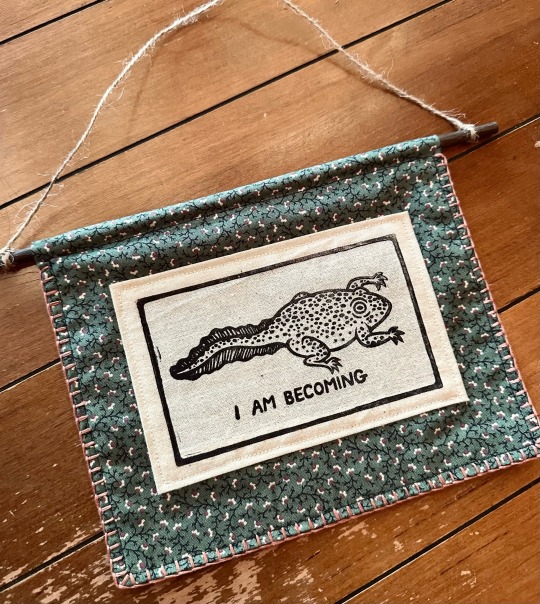
“becoming” banner by jasper alexander
linocut print on fabric, home sewn utilizing recycled textiles
#I am prepping for markets and my body is a constant state of motion#fingers always stitching or carving or packing or typing#linoprint#printmaker#block printing#printmaking#relief print#salted snail studio#block print#reliefprint#blanket stitch#embroidery#mixed media#relief printed fabric#relief printing#fabric printing#creativereuse#recycled textiles#linocut#linocut patch
11K notes
·
View notes
Link
Textile Market size is forecast to reach US$374.1 billion by 2026, after growing at a CAGR 4.2% during 2021-2026. Globally, the rising demand for apparel from the fashion sector, as well as the rise of e-commerce platforms is expected to drive the Textile Market growth.
0 notes
Text

handstitched earrings, available in my shop ❣️
etsy
#its been a slow couple of weeks and i don’t have any markets coming up#so i’m trying to share my work every day cause ya girl needs some sales 🥲#mine#my art#art#embroidery#textile art#fiber art#earrings#jewelry#fashion#jewellery#slow fashion#fibre arts#witchy fashion#heart aesthetic#love aesthetic#heartcore#lovecore#heart shaped#whimsigoth#artists on tumblr#sacred heart
152 notes
·
View notes
Text
Smocking
I wanted to experiment using smocking as I felt that it could be an option for the bodice of my final garment. I created two samples, a smaller one with larger diamond shaped and a larger one with more layers but smaller diamonds. I feel that I like the look of the smaller diamonds as I just feel it makes the whole look very neat and uniform.
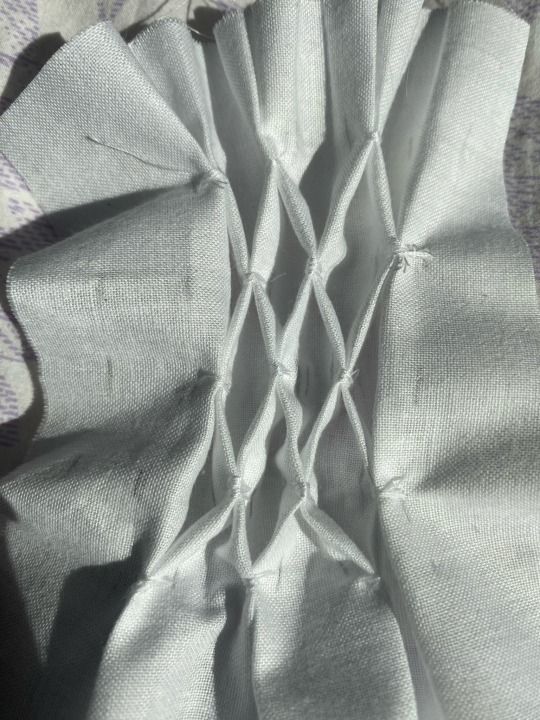
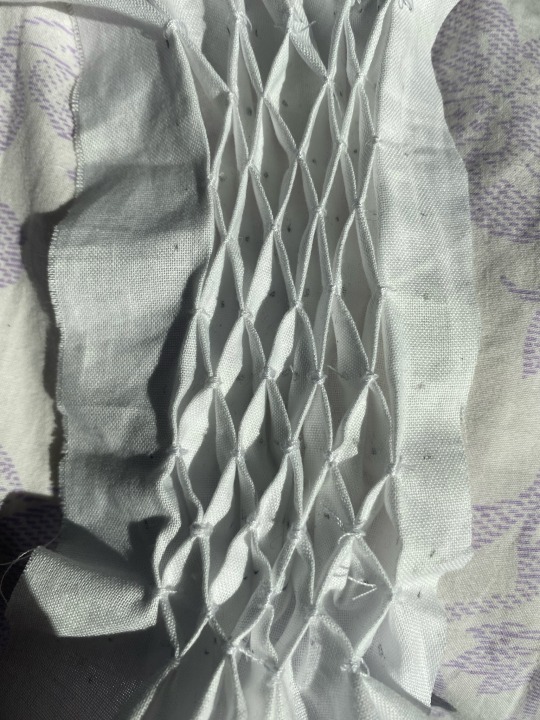
How to create;
- Draw dots at equal intervals,
- Thread cotton in lines, over and under, through the dots,
- Pull the loose threads tight to create folds,
- Sew every other two folds together, differing each time on each row,
- Pull out the loose thread that you began with,
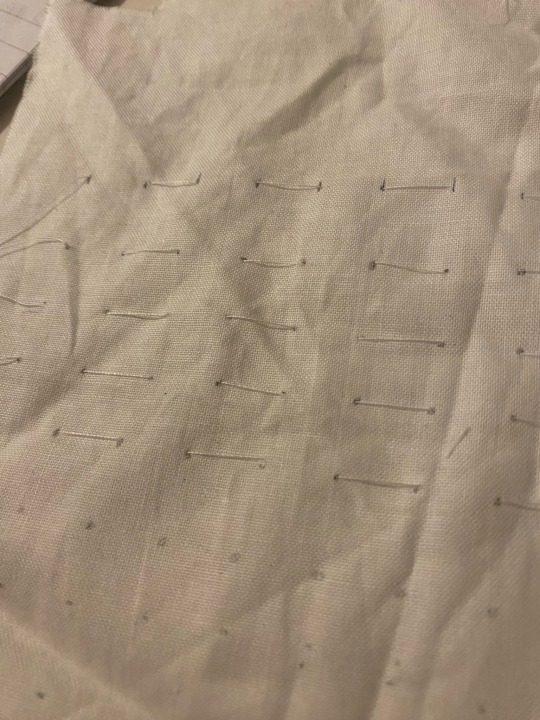
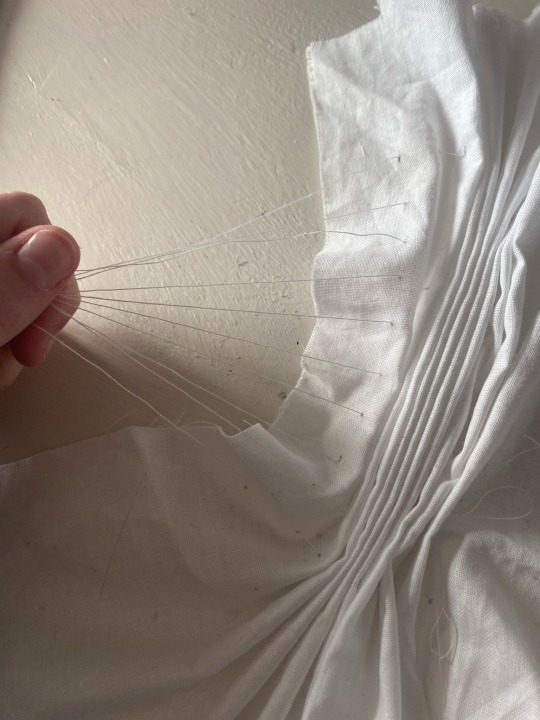
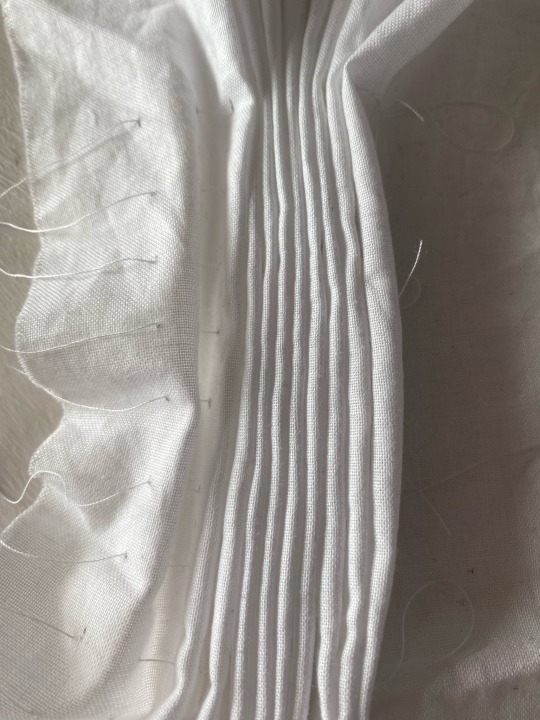
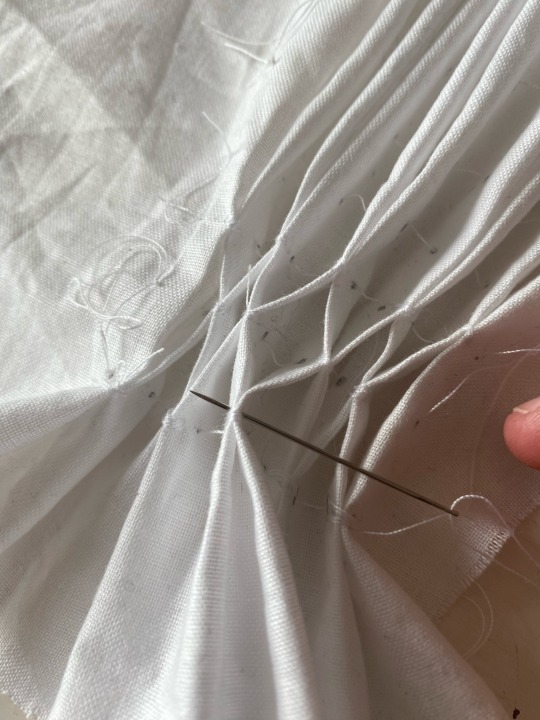
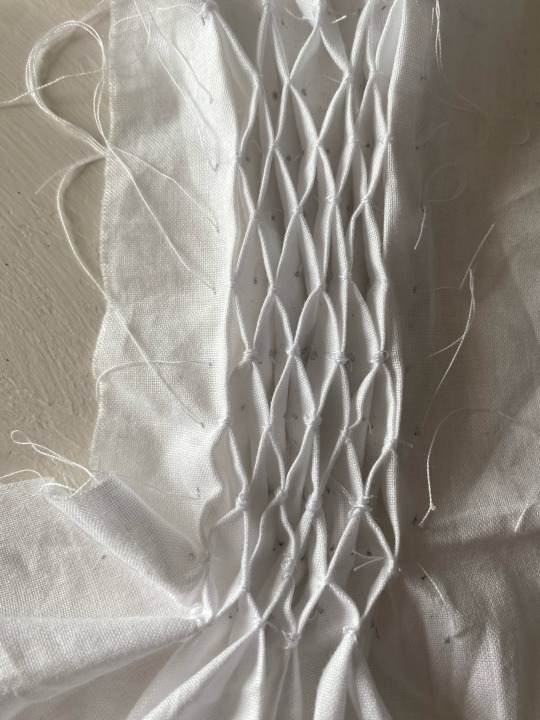
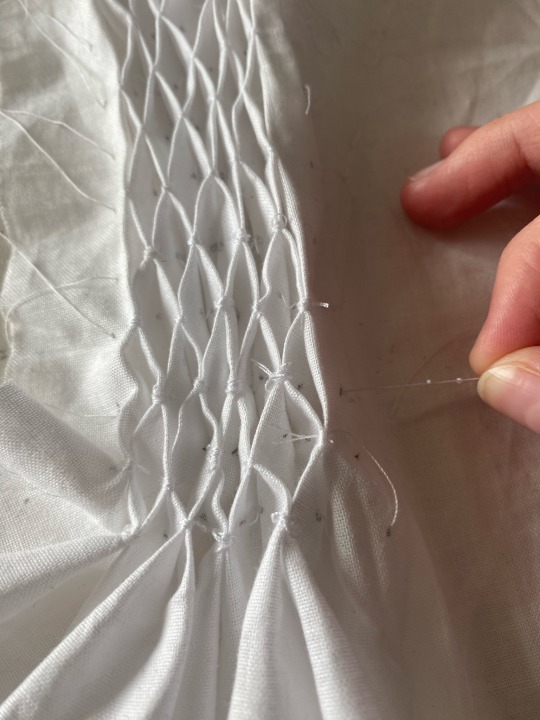
#fashion#textiles#fashion illustration#fashion marketing#history#the duchess#fashion history#development#cannon hall#print design#smocking#sewing
132 notes
·
View notes
Text
i just cant quit tumblr forever it’s so funny
#hi. I have mostly been offline cause i started sewing and its been really fun!#also i am rushing to get stuff out to sell at markets#i am at the textile craft stage of life
23 notes
·
View notes
Text
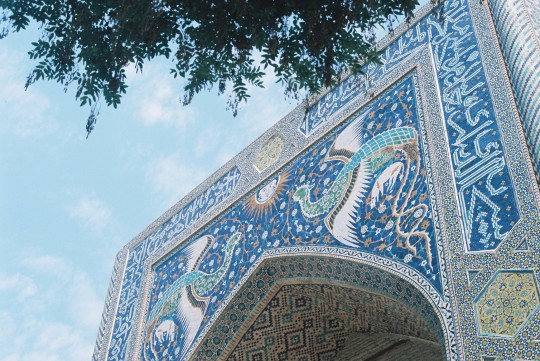

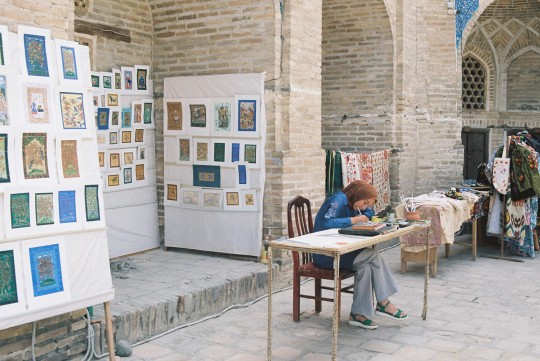
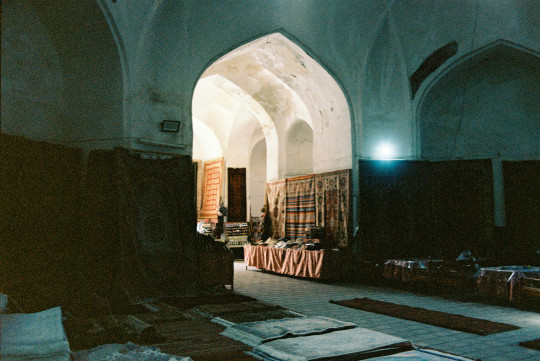
Bukhara, Uzbekistan (2) (3) (4) by Caspar Tromp
Via Flickr:
(3) Persian miniature painter inside the Kukoldosh madrasah, a historical Islamic school building of the 16th century.
#islamic architecture#tiles#azulejos#human subject#madrasah#madrasa#market#textiles#uzbekistan#bukhara
91 notes
·
View notes
Text

s://instagram.com/amy_brocantellving
66 notes
·
View notes
Text

🍏🍓 Goblin Market🍊 come buy🫐come buy🍇🍐. Patchwork panel 16x16cm with hanging embroidery fruits.
#english folklore#folklore#fae folk#folk magic#folk art#folkloric#goblin market#goblincore#goblin aesthetic#goblin#cottagecore#fairy tales#english folk art#pre raphaelite#whimsigoth#whimiscal#aesthetic#my art#art#textile art#textile#textiles#embroidery#cryptid aesthetic#cryptidcore#dungeons and dragons#medieval core#fae core#faecore#faerie
32 notes
·
View notes